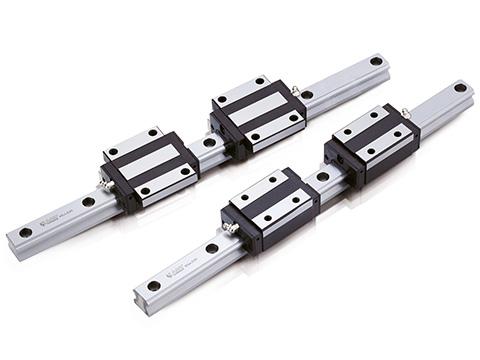
Posted to News on 21st Sep 2022, 14:30
Design considerations for choosing a linear rail

Japh Humphries, UK sales and commercial manager at Matara UK, looks at the considerations for specifying a linear rail, and highlights five common mistakes to avoid.
Highly versatile, linear motion is used anywhere a repetitive process needs automating. A linear rail is a common linear motion component that allows for the smooth movement of loads along one single axis. The most common linear rail applications include pick and place systems, support systems for actuators used in XYZ gantry systems, industrial and train door runners, machine tools, automation systems, and printing and packaging machinery.
In order for a linear motion system to perform efficiently and to be cost-effective, it is essential for the linear rails and guides to be correctly specified and set up. To do otherwise could have significant consequences including excessive friction which will impact overall system performance and lead to premature failure, as well as generating unacceptably high noise.
At Matara, we have been producing linear rails for over 20 years. Based on that experience, let’s look at the five most common mistakes made by customers when specifying and setting up a linear rail, enabling you to avoid going down the same costly path.
Incorrectly calculating preload
Preload is the elimination of internal clearance between the linear rail and carriage. This makes the system more rigid by creating a load on the linear guide, which reduces deflection when an external force is applied. Common preload amounts for linear guides are 2, 5, or 8 percent of the dynamic load capacity. When specified accurately, preload reduces noise, vibration, heat generation and deflection. However, if the preload is not properly calculated or the mounting surfaces are not of a high enough precision to match that of the linear guide, attempting to apply preload can lead to friction – especially if the preload is too high - and reduce the overall performance of the linear automation system.
Not taking tolerance into account
The goal of linear rails is to guide motion in a way that produces the least amount of friction between the carriage and the rails. If the rails or the bearings/balls of the carriage are not within the correct physical specifications then friction can occur, resulting in heat, noise and/or damage to the parts. For linear rail specifications, tolerances must be accounted for in both the flatness of the mounting surface to which the rail is mounted and also how parallel the linear rails are to one another; any friction seen during operation is likely due to rail misalignment or incorrectly specified mounting tolerances.
Treating mounting features as an afterthought
The purpose of mounting features, such as shoulders or alignment pins, is to support the linear rails to ensure that they perform to their specification. Mounting features add to the travel accuracy, speed and rigidity of the system and therefore its precision. Whilst linear rails are supplied straight, providing them with a stable support structure ensures that they remain both straight and parallel. Mounting features are specified by manufacturers to very precise dimensions, and these should be included as part of the linear automation system design from the outset.
Failing to test a full run
Once assembled, linear automation systems such as linear guides must be tested across the full run of travel to ensure parallelism across the linear rails themselves. From one end to the other, the push force should show consistency to within 20%; if there is an increase in force it may be that the linear rails need realignment. Without the correct level of alignment for the linear guide, it may lead to friction, deflection and noisy operation not to mention a potential safety issue.
Underestimating environmental factors
Demanding applications and locations, plus regular washdowns, take their toll on linear rails, frequently resulting in corrosion. This can be avoided, and maximum longevity achieved, through the application of specialist coatings or epoxy paints. There are a good range of options here, including Armoloy TDC coating, which we use on our linear rail and ballscrews for maximum longevity. Armoloy TDC is a hard (78Rc), thin, dense chromium coating with a micro-nodular surface texture which provides corrosion protection equal to 440 series stainless steel. It extends wear life by nearly 50% when compared with a typical hard chrome coating.
These are by far the most common mistakes made when specifying and setting up a linear rail, but they are not the only ones. In many of these cases, a good, experienced manufacturer should spot these and point out any potential issues with your choice of rail or system set up, so be sure to work collaboratively with them and put their knowledge to good use.
Want the latest machine building news straight to your inbox? Become a MachineBuilding member for free today >>
Unit 5801 Shannon Way
Shannon Place
Tewkesbury Business Park
GL20 8SL
UNITED KINGDOM
+44(0) 1684 850000

















